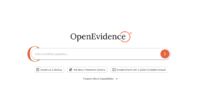US healthcare organisations are calling on federal and state policymakers to modernise outdated laws and payment systems to harness artificial intelligence’s potential in care delivery, as the country faces a projected shortfall of 3.2 million healthcare workers by 2026.
A white paper released today by HealthFORCE, the American Academy of Physician Associates and West Health argues that AI tools cannot address workforce shortages without accompanying policy reform to remove regulatory barriers constraining clinical practice.
The report, titled “Aging Well with AI: Transforming Care Delivery” and developed by The LINUS Group, represents the second in a two-part series examining how AI can support care teams and expand access amid growing strain on America’s healthcare system.
Lisa M. Gables, CEO of AAPA and founder of HealthFORCE, said outdated infrastructure prevents innovation from reaching patients. “America’s healthcare system is not built for the future,” she said. “We can’t just innovate around broken infrastructure—we need to modernise it. This paper makes clear that AI alone won’t fix workforce shortages, but with policy reform, it can dramatically ease the burden and bring care to more people.”
The paper highlights promising AI applications, including ambient documentation that reduces time spent on charts, virtual care coordination systems that streamline referrals and follow-ups, and personalised clinical education that helps providers stay current. Such innovations are already demonstrating impact in pilot programmes across the country.
Health providers empowered by AI
The report proposes a Risk/Impact Matrix to guide adoption, recommending acceleration of low-risk, high-impact use cases. These include ambient AI scribes freeing clinicians from redundant charting, AI-supported care coordination reducing duplicative tests through smart triage and automated workflows, and on-demand clinical training empowering providers with AI-enhanced continuing education.
High-impact but more complex applications, including AI-assisted diagnostics and at-home monitoring for vulnerable patients, are discussed as future-critical innovations requiring additional development.
The paper identifies current regulatory constraints as the primary barrier to AI adoption, noting that promising tools remain ineffective whilst providers face outdated supervision requirements, restrictions on independent use of digital platforms, and reimbursement models rewarding documentation over outcomes.
The report outlines four specific policy developments needed to enable scalable AI integration in care delivery. These include modernising practice laws to allow providers, especially physician associates and nurse practitioners, to practise to the full extent of their training; shifting payment models away from volume-based reimbursement toward continuity, outcomes and technology-enabled care; streamlining documentation requirements to align federal billing rules with AI-powered system capabilities; and establishing national AI standards for safety, equity and interoperability across all care settings.
The workforce crisis compounds with an ageing population whose care needs are becoming more complex, creating access challenges that the organisations argue require both technological innovation and regulatory modernisation to address effectively.











